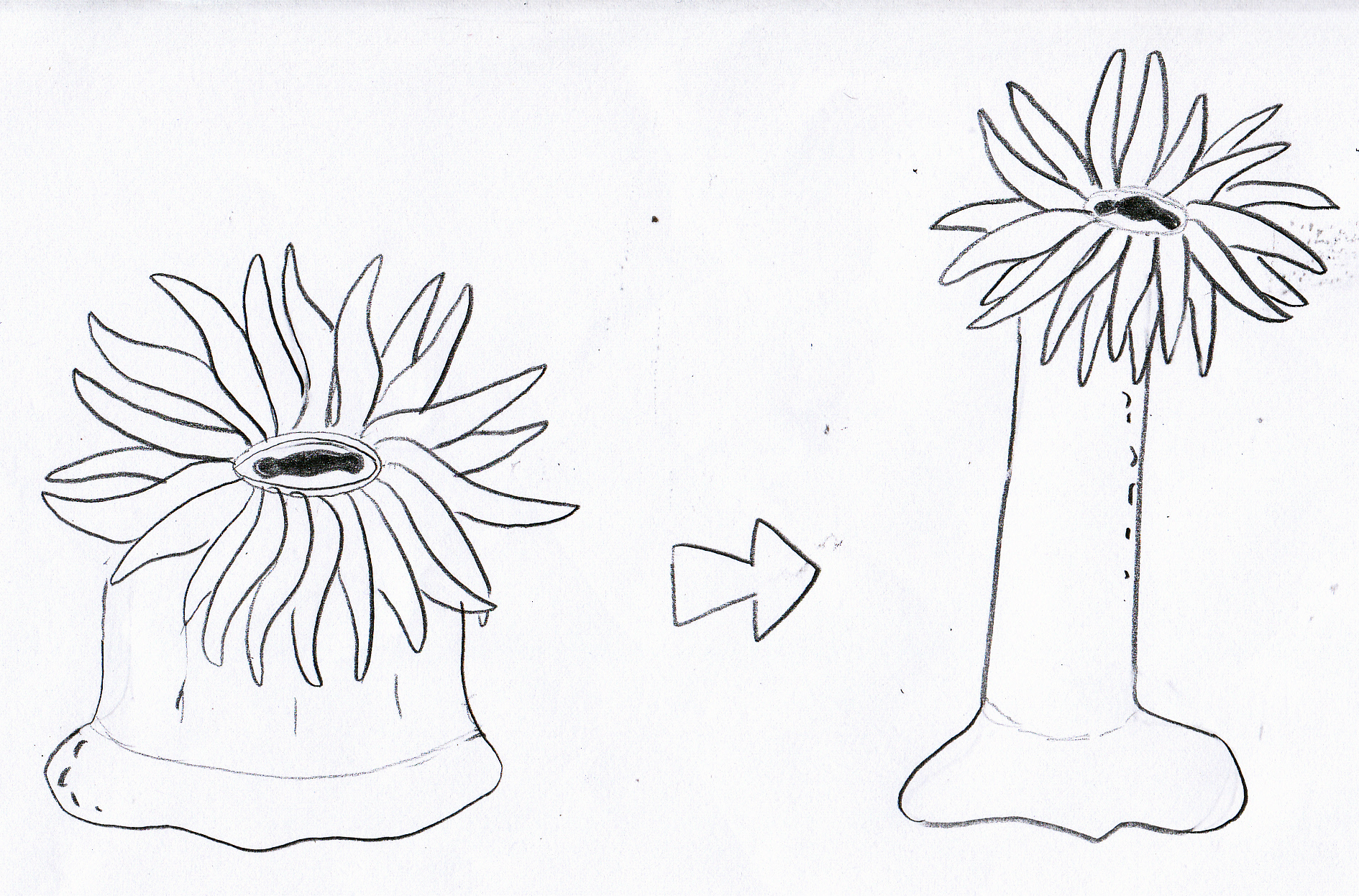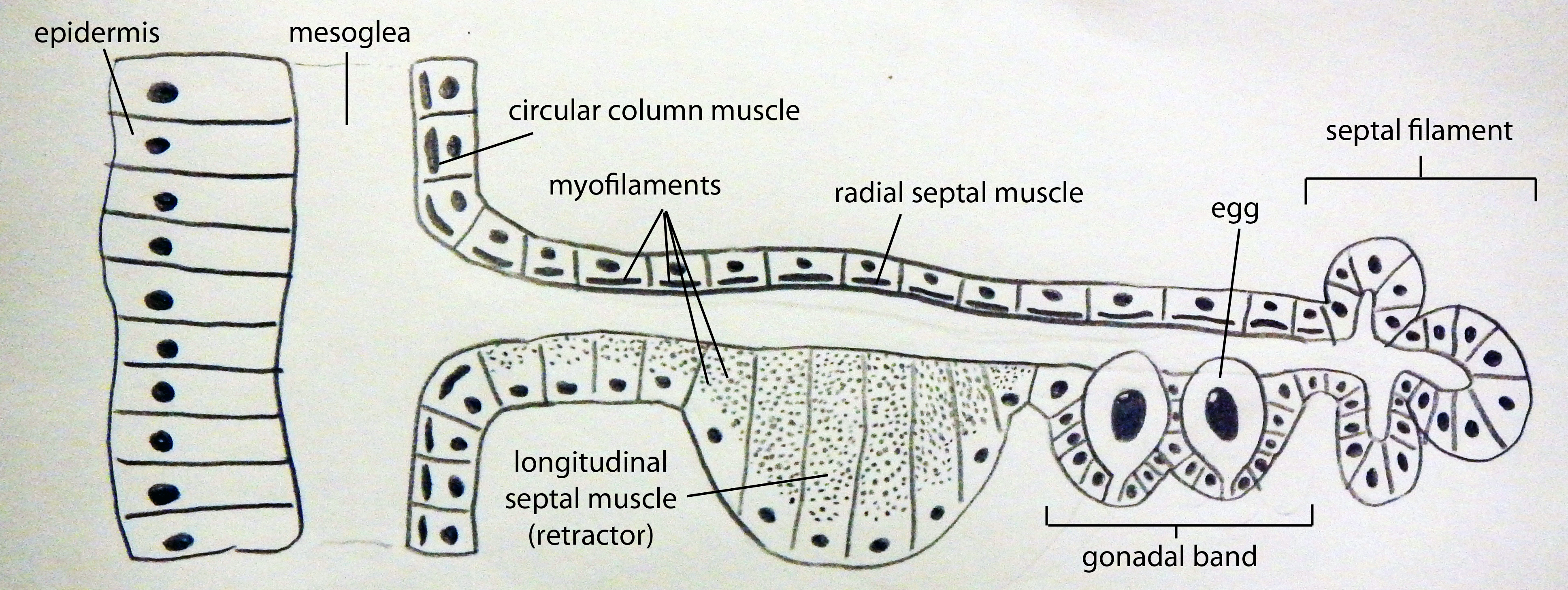Skeleton and Musculature
 |
|
Figure 1. Example of how a sea anemone uses a hydrostatic skeleton to change its body shape. |
Sea anemones do not have a calcareous skeleton1. Instead, they have a hydrostatic coelenteron that functions mainly as the skeleton2. The mechanics of a hydrostatic skeleton relies on the incompressible nature of seawater that a sea anemone traps within its coelenteron by keeping its mouth shut. It can then generate forces through muscular contraction, which is transmitted via the hydraulic fluid to the walls of the cylinder. The body then responds by deforming accordingly such that the sea water is still accommodated within the coelenteron3 (Figure 1).
The major muscle in sea anemones is endodermal, although there are diffuse ectodermal muscles limited to the tentacles and oral disc. The muscles of the tentacles and oral disc are oriented to facilitate capture, retention and ingestion of prey4. Such muscles are capable of highly localized actions independent of the endodermal musculature that controls body form5. The gastrodermal muscles are composed of a sheet of circular muscle in the column wall, longitudinal and radial mesentery muscles, and a circular musculature around the pharynx. The longitudinal muscles are known as retractors. They are strongly developed and occur singularly on either of the two faces of each mesentery, stretching from the pedal to the oral disc. Retractors are typically a local concentration of enlarged epitheliomuscular cells with a high density of myofilaments in each. This results in a conspicuous band of muscle bulging from the surface of the mesentery2 (Figure 2).

Figure 2. Transverse section through a sea anemone body wall and mesentery that illustrates muscle arrangement and gonad. Adapted from Ruppert, Fox & Barnes (2004).
In Cryptodendrum adhaesivum, the longitudinal muscles are ectodermal, while the circular muscles are endodermal. The retractors are diffuse, well-developed, and band-like6.
1Erhardt & Knop 2005
2Ruppert, Fox & Barnes 2004
3Shick 1991
4Holley & Shenton 1984
5Batham & Pantin 1951
6Dunn 1981
|